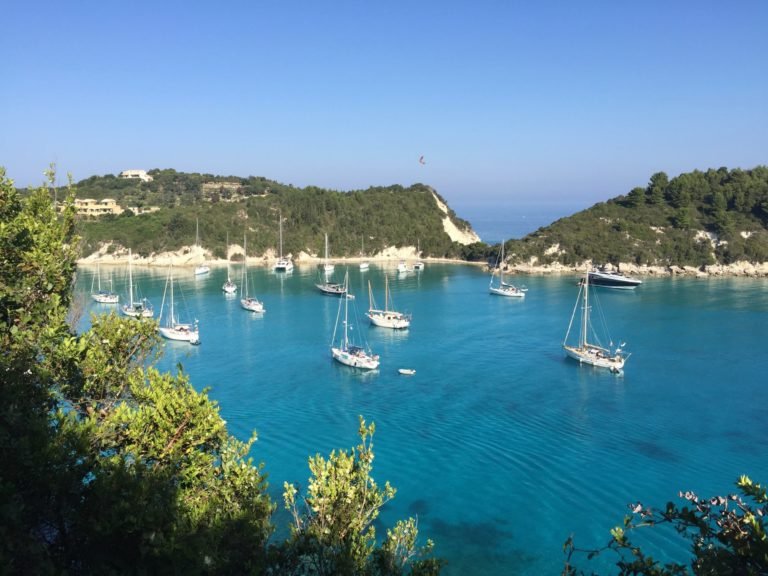In-Depth Study: Why Thunderstorms in the Ionian Sea Happen Often
Introduction
The Ionian Sea, part of the Mediterranean Sea, is situated between southern Italy, including Sicily, to the west, Greece to the east, and Albania to the north. This region is known for its frequent thunderstorms, particularly during certain times of the year. Understanding the reasons behind the frequent occurrence of thunderstorms in the Ionian Sea involves exploring a combination of geographic, meteorological, and climatic factors.
Table of Contents
Geographic and Climatic Overview
- Geographic Location:
- The Ionian Sea lies in a transitional zone between the cooler, temperate climate of Europe and the warmer, subtropical climate of the Mediterranean. This juxtaposition creates a dynamic weather system that is prone to instability.
- Topography:
- The surrounding mountainous regions, including the Apennines in Italy and the Pindus range in Greece, contribute to orographic lifting. When moist air masses move inland and are forced to rise over these mountains, they cool and condense, leading to cloud formation and precipitation.
- Sea Surface Temperatures:
- The warm sea surface temperatures (SST) of the Ionian Sea, especially in the late summer and early autumn, provide ample moisture and energy for thunderstorm development. The Mediterranean Sea as a whole exhibits relatively high SSTs due to its enclosed nature and limited exchange with the Atlantic Ocean.
Meteorological Factors
- Atmospheric Instability:
- The region experiences significant atmospheric instability, particularly during transitional seasons (spring and autumn). This instability is often due to the interaction between warm, moist air from the sea and cooler air masses from the north.
- Mediterranean Lows:
- The Ionian Sea is often influenced by Mediterranean lows, also known as “Mediterranean cyclones.” These low-pressure systems can generate severe weather, including thunderstorms, as they move across the region.
- Convergence Zones:
- Convergence zones, where different air masses meet, are common in the Ionian Sea. The interaction between these air masses can lead to the development of convective storms. For example, the meeting of the moist, warm air from the south with the cooler, drier air from the north creates ideal conditions for thunderstorms.
- Jet Streams:
- The presence of jet streams, particularly the subtropical jet stream, can enhance upper-level divergence and low-level convergence, promoting thunderstorm development. The jet stream can also bring cooler air aloft, increasing instability in the lower atmosphere.
Seasonal Variations
- Spring and Autumn:
- Thunderstorms are most frequent during spring and autumn when the temperature gradients between the sea and the land are most pronounced. During these seasons, the sea remains relatively warm while the land cools down more rapidly, creating conditions conducive to atmospheric instability.
- Summer:
- In summer, the region can experience thunderstorms due to the intense heating of the land. This heating can create localized low-pressure areas and increase the likelihood of convective storms, particularly in the late afternoon and early evening.
- Winter:
- While less frequent than in other seasons, winter thunderstorms can still occur, often associated with the passage of strong cold fronts or the presence of Mediterranean cyclones.
Role of Sea Surface Temperature Anomalies
- Mediterranean Oscillation:
- Variations in sea surface temperatures, influenced by broader climatic patterns such as the Mediterranean Oscillation, can impact the frequency and intensity of thunderstorms. Positive SST anomalies can lead to enhanced evaporation and moisture availability, fueling thunderstorm activity.
- Climate Change:
- Long-term trends related to climate change may also be influencing the frequency and intensity of thunderstorms in the Ionian Sea. Warmer sea temperatures and increased atmospheric moisture can contribute to more frequent and severe storms.
Case Studies
- Storm Analysis:
- Detailed analyses of specific thunderstorm events in the Ionian Sea can provide insights into the mechanisms at play. For example, the study of a severe thunderstorm outbreak in October 2014 highlighted the role of a Mediterranean low and the interaction of moist, warm air with cooler, drier air from the north.
- Statistical Studies:
- Statistical analyses of thunderstorm occurrences over multiple decades can help identify trends and patterns, providing a broader understanding of the factors influencing thunderstorm frequency and intensity.
Conclusion
The frequent occurrence of thunderstorms in the Ionian Sea is the result of a complex interplay of geographic, meteorological, and climatic factors. The region’s unique location, coupled with its dynamic weather systems and warm sea surface temperatures, creates an environment ripe for thunderstorm development. Seasonal variations, atmospheric instability, and broader climatic trends all contribute to the patterns observed. Understanding these factors in greater detail can help improve weather forecasting and mitigate the impacts of severe weather in the region.
References
- Lionello, P., Malanotte-Rizzoli, P., & Boscolo, R. (Eds.). (2006). Mediterranean Climate Variability. Elsevier.
- Raveh-Rubin, S., & Wernli, H. (2015). Large-scale wind and precipitation extremes in the Mediterranean: a climatological analysis for 1979-2012. Quarterly Journal of the Royal Meteorological Society, 141(689), 2404-2417.
- Ziv, B., Saaroni, H., & Alpert, P. (2004). The factors governing the summer regime of the eastern Mediterranean. International Journal of Climatology, 24(14), 1859-1871.





